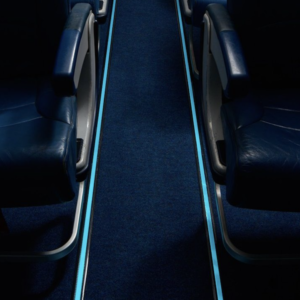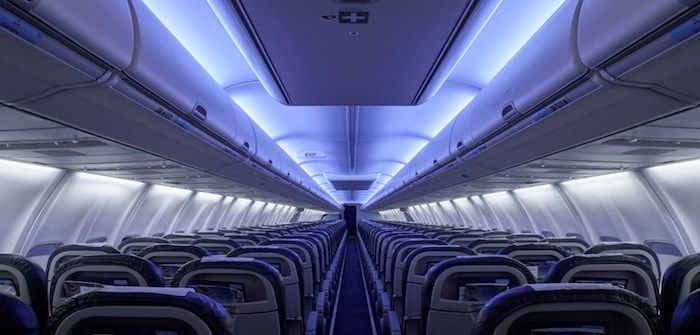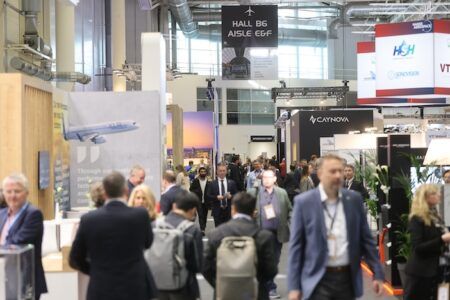What does your role entail?
 Sean O’Kell: Actually it covers two key aspects. One aspect is the research side of things, hence the word ‘innovation’ in my job title, but I’m also head of design following on from our successful application for EASA DOA status.
Sean O’Kell: Actually it covers two key aspects. One aspect is the research side of things, hence the word ‘innovation’ in my job title, but I’m also head of design following on from our successful application for EASA DOA status.
Can you explain that a bit more?
Having DOA status means that for the first time ever we can take a product from an idea through the design, development and certification phases and fit it to an aircraft, all under our own in-house approval process. Historically we’ve always had to use external companies to do this type of thing, but now we can do it all ourselves.
What did you have to do to get this status?
We were thoroughly audited by EASA and had to give a full presentation on our capabilities and procedures. As a result of that, we had to set up a specific internal reporting structure. Which is why, in addition to being director of innovation, I also have the job title of head of design.
My job is to book-end the whole development process. We start with what might sound like a crazy idea, and once we have developed the idea and defined the requirements it is handed over to the engineering team, who turn the idea into a product. Then, at the end of the process, we make sure that what they’ve developed is what we’ve asked for in the first place and that it meets all the EASA requirements and is fit for purpose.
Does having DOA status give you a competitive advantage?
I’d say it helps us to punch above our weight. A very large organization will obviously have all the processes in place and the approvals we have. But it’s unusual for a company of the size of STG to have EASA DOA/POA and FAA PMA status along with our AS9100 and ISO 9001 quality approvals. It means we can get new products to market more quickly knowing we have the right quality.
How important is R&D and new product development?
 Put simply, without research, you won’t have a business going forward. STG Aerospace started out in life as a one product company: the saf-Tglo floor lighting product. But since then, we’ve taken that one product and used our expertise to develop new product ranges. So now, when we talk about photoluminescence, we don’t just mean strips on the floor, we mean signage, we mean things like the power socket surrounds so you can find them in low light, markers, whatever it may be. There’s a whole series of applications.
Put simply, without research, you won’t have a business going forward. STG Aerospace started out in life as a one product company: the saf-Tglo floor lighting product. But since then, we’ve taken that one product and used our expertise to develop new product ranges. So now, when we talk about photoluminescence, we don’t just mean strips on the floor, we mean signage, we mean things like the power socket surrounds so you can find them in low light, markers, whatever it may be. There’s a whole series of applications.
And, of course, it’s not just photoluminescence. We’re also talking LED. The introduction of our liTeMood system marked the beginning of a whole new chapter of development for us.
That sounds like you have made a step change…
Well, we started to rethink all aspects of cabin lighting and how it impacts on the passenger experience. It’s not just about the quantity of light, it’s also the quality of the light. It’s how it affects someone’s photobiological response as well as their photometric response – basically how it impacts on you physically rather than just visually – and the phrase we like to use is human-centric lighting.
I can see that from the passenger’s point of view, but what does it mean for the airlines?
 Whether it’s warm lighting to relax you or cool lighting to help with your concentration, the quality of the light stimulates an unconscious response from the individual, and airlines are going to benefit from that. Imagine you’re reading the inflight magazine: with a high-quality reading light, you’ll see much higher quality images, and suddenly those products look better and you’re likely to buy more. It’s all about perception.
Whether it’s warm lighting to relax you or cool lighting to help with your concentration, the quality of the light stimulates an unconscious response from the individual, and airlines are going to benefit from that. Imagine you’re reading the inflight magazine: with a high-quality reading light, you’ll see much higher quality images, and suddenly those products look better and you’re likely to buy more. It’s all about perception.
We’re also now controlling the lighting in the cabin using the ceiling sidewalls to give the very best quality of ambient light – it makes everything on the food trolley look better, the drinks trolley looks better, and the cabin crew look better!
It’s also the ‘wow’ factor when you board. You can create a subliminal perception that the cabin looks new and modern, and that strengthens a passenger’s confidence in the airline.
Do you collaborate with any outside organizations in your research?
Yes, we’re currently working with two universities: Cardiff for research with phosphors, and Manchester, where we’re researching the impact of our lighting on the circadian rhythm.
What projects are you working on today?
Essentially, we’re looking at areas where we can apply our expertise, and one of those areas is the cabin’s ancillary lights. So we’re not just talking about ceiling lights, we’re talking about the sidewalls and the boarding exit lights fore and aft.
I mentioned our reading lights earlier, and that’s a very good example of our approach. If you install a nice, new LED cabin lighting system, then an old-fashioned yellow reading light is really going to stand out. Aesthetically and in terms of performance, it’s horrible. So we looked at that and talked to certain large OEM customers. The end result was a patented photometric design featuring a tri-phosphor LED with a high CRI value and a very high RA value, which delivers an enhanced quality and optimized uniformity of light.
On top of that, the unique patented square lighting profile precisely defines the passenger space by distributing light evenly across the seating area, improving visibility without compromising the experience of neighboring passengers. And, of course, it’s over 10-times more reliable than incandescent lights and consumes 80% less power.





